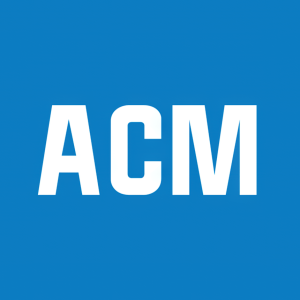ACM Research’s 18 Chamber, 300mm Ultra C VI Single-Wafer Cleaning Tool Enters Mass Production
ACM Research (NASDAQ: ACMR) announced the successful qualification and mass production of its Ultra C VI tool, a cutting-edge semiconductor cleaning solution with 18 chambers. This tool enhances throughput by 50% compared to its predecessor, accommodating over 800 wafers per hour. With applications in both front-end and back-end processes, it meets the rising demand for semiconductor manufacturing efficiency, particularly amid the push for smaller technology nodes. The Ultra C VI tool was also validated by a major memory chip manufacturer in China.
- The Ultra C VI tool achieves 50% more throughput than the previous model.
- Successfully moved to mass production, indicating strong customer validation.
- Qualified by a significant customer in China, expanding market reach.
- None.
ACM’s Ultra C VI Tool Supports Most Semiconductor Clean Processes for Advanced Logic, DRAM and 3D NAND Manufacturing; Provides
FREMONT, Calif., April 21, 2022 (GLOBE NEWSWIRE) -- ACM Research, Inc. (ACM) (NASDAQ: ACMR), a leading supplier of wafer processing solutions for semiconductor and advanced wafer-level packaging (WLP) applications, today announced that its 18 chamber, 300mm Ultra C VI single wafer cleaning tool has been qualified by a customer and successfully moved to mass production. First introduced to the market in the second quarter of 2020, the tool has also been qualified for mass production by a mainstream memory chip manufacturer in China.
“As technology nodes shrink, the complexity of chips is increasing, as are the number of wet cleaning process steps,” said Dr. David Wang, ACM’s President and Chief Executive Officer. “With the current unprecedented demand for semiconductor chips, the requirements for production capacity have become higher as well—and our 18 chamber system directly addresses this need. By moving our Ultra C VI tool to mass production, we can better serve our customers, allowing them to increase throughput by
About ACM’s 18 Chamber, 300mm Ultra C VI Tool
The 18 chamber, 300mm Ultra C VI tool is compatible with nearly all wet clean and wet etch processes. It can be used in several front-end and back-end applications, including polymer removal, tungsten (W) loop or back-end copper process, pre-deposition clean, post-etch and post-chemical mechanical polishing (CMP) clean, deep trench clean and RCA standard clean.
The 18 chamber, 300mm Ultra C VI tool is equipped with one highly efficient wafer transfer system that consists of multiple robots, which allows the tool to reach a maximum throughput of more than 800 wafers per hour. The tool targets high-throughput cleaning, with a
About ACM Research, Inc.
ACM develops, manufactures and sells semiconductor process equipment for single-wafer or batch wet cleaning, electroplating, stress-free polishing and vertical furnace processes, which are critical to advanced semiconductor device manufacturing and wafer-level packaging. The company is committed to delivering customized, high-performance, cost-effective process solutions that semiconductor manufacturers can use in numerous manufacturing steps to improve productivity and product yield. For more information, visit www.acmrcsh.com.
© ACM Research, Inc. ULTRA C and the ACM Research logo are trademarks of ACM Research, Inc. For convenience, these trademarks appear in this press release without ™ symbols, but that practice does not mean that ACM will not assert, to the fullest extent under applicable law, its rights to the trademarks.
| Media Contact: | Company Contacts: |
| Jillian Carapella | USA |
| Kiterocket | Robert Metter |
| +1 646.402.2408 | ACM Research, Inc. |
| jcarapella@kiterocket.com | +1 503.367.9753 |
| China | |
| Xi Wang | |
| ACM Research (Shanghai), Inc. | |
| +86 21 50808868 | |
| Korea | |
| YY Kim | |
| ACM Research (Korea), Inc. | |
| +821041415171 | |
| Taiwan | |
| David Chang | |
| +886 921999884 | |
| Singapore | |
| Adrian Ong | |
| +65 8813-1107 |

FAQ
What is the throughput increase of ACMR's Ultra C VI tool?
When was the Ultra C VI tool first introduced to the market?
Who qualified the Ultra C VI tool for mass production?
What are the main applications for the Ultra C VI tool?







